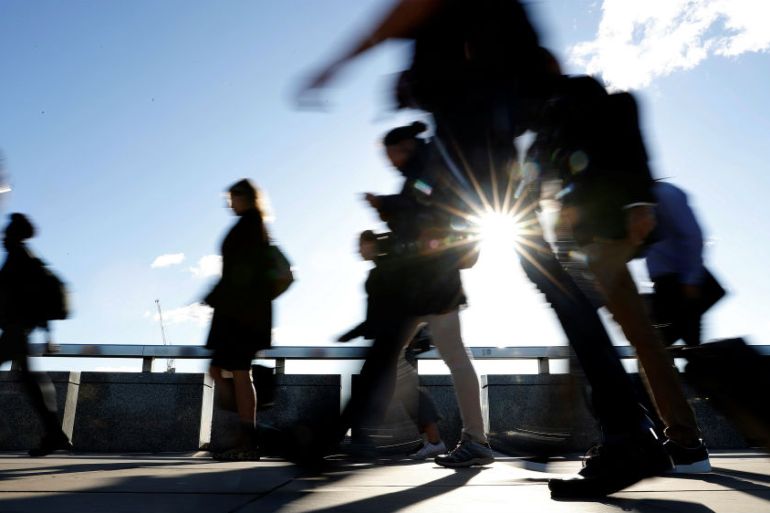Has austerity contributed to UK’s ethnic gender pay gap?
On Equal Pay Day, new research indicates gender pay gap significantly worse for women of colour.

London, United Kingdom – November 14 marks this year’s Equal Pay Day in the United Kingdom, the day women collectively start “working for free”, relative to men.
Last year, it fell on November 10, prompting women’s campaign groups to point out that, at this rate, it will take decades before women reach full equality in the workplace.
Keep reading
list of 2 itemsWomen rally for equal pay, gender parity in Switzerland
Figures published by the Office for National Statistics (ONS) show the average pay gap between men and women full-time employees stands at 8.9 percent, calculated using the average hourly earnings of men and women employed across all sectors and company sizes, not including overtime. It has fallen a mere 0.6 percent since 2012.
Among all workers – including part-time staff and others – that figure shoots up to 17.3 percent, a small fall from 17.8 percent in 2018.
The UK passed the Equal Pay Act in 1970, but women continued earning less than men. In 2017, a law was passed to name and shame companies by introducing compulsory gender pay reporting for those with 250 or more employees. Based on the median hourly pay of men and women, the first round of reporting showed that no sector paid women more than men.
Good news for the next generation?
The latest ONS data appears to contain some good news: It shows that the gap is closing among the younger generations, as the pay difference between women and men under the age of 40 is now close to zero.
But research suggests that ethnicity should be factored in as well and that some minority groups lag behind in gender pay equality.
The Fawcett Society, a charity campaigning for gender equality, found in 2017 that the gender pay gap was shaped by racial inequality, and is experienced by women from different ethnic backgrounds in different ways.
While women of a Chinese background tend to be paid more for full-time work than white British men – though less than Chinese-background men – the pay gap is widest for women of Black African, Pakistani and Bangladeshi origin.
“Most women of colour experience larger gender pay gaps than white women,” Sam Smethers, the Fawcett Society’s CEO, told Al Jazeera.
“Evidence shows that BAME women have been disproportionately negatively affected by austerity. They are also more likely to be in low-paid work,” Smethers continued. “Despite the fact they often have strong qualifications, they face multiple discriminations and additional barriers to labour market participation and career progression.”
Going hungry
One example of these barriers is access to childcare. The Fawcett Society report points out that childcare falls disproportionately on the shoulders of ethnic minority mothers – for example, one cited study showed that while 36 percent of white parents used informal and family childcare, only 23 percent of ethnic minority parents did.
The Young Women’s Trust highlights the issue of childcare in their latest research, published on Thursday. It found that half of all working mothers aged 18-30 say they skip meals at least once a week. Years of cuts, the report says, have had a detrimental effect on young mothers, who are increasingly going hungry.
The UK has the most expensive childcare in Europe.
The first official analysis of data based on ethnicity published earlier this year shows that “ethnic pay gaps” exist even after type of occupation, level of education and regional differences are taken into account.
“A lot of people attribute these gaps to different characteristics, such as they live in different parts of the country, they work in different occupations,” Kathleen Henehan, a policy analyst at the Resolution Foundation, a think-tank that studies low- and middle-income households in the UK, told Al Jazeera.
“But actually we ran a model that says ‘let’s assume that people work in the same occupation and in the same industry and have the same qualifications’. We found that these gaps still persist.”